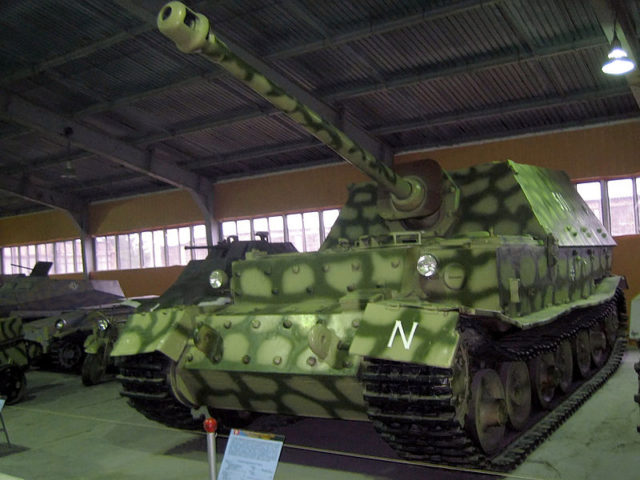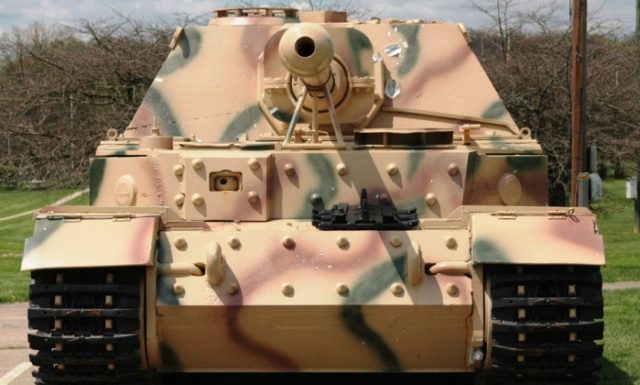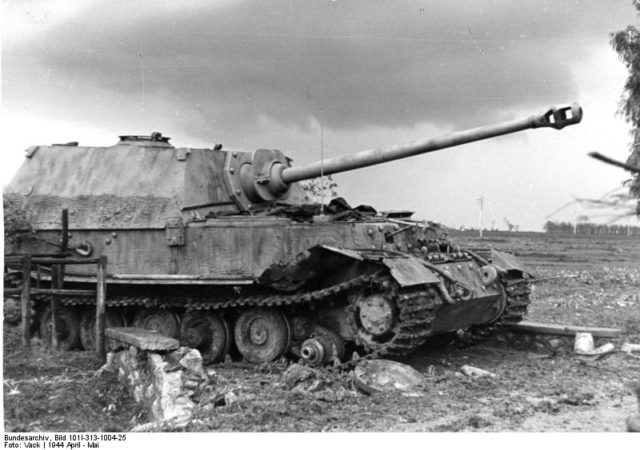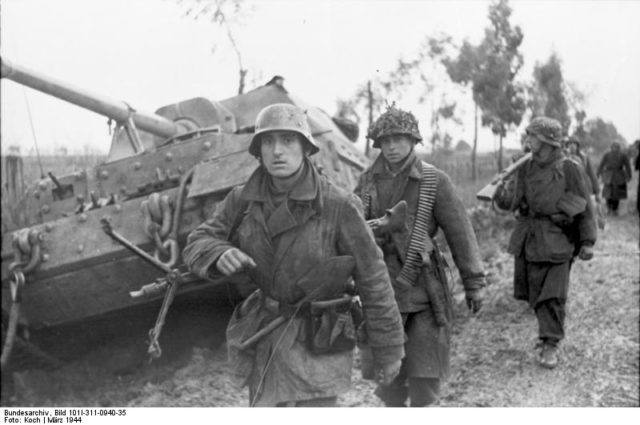When Ferdinand Porsche offered his designs for the Tiger II tank in 1939, it was deemed too unconventional. It was also considered too demanding to be mass produced. One hundred chassis were built for prototype uses, but the contract was instead given to Henschel & Son Company, which was the manufacturer of the Tiger I model. It was not until 1943 that the Porsche design found its use in a soon-to-be lost war.
A new tank destroyer was needed and Hitler once again turned to the Porsche company. The first units produced were made of the remnants of Porsche’s Tiger II prototypes and were named Ferdinand, in honor of their manufacturer. Ferdinand was fitted with an 8.8 cm Pak 43 made by Krupp, with an effective range of 4,000 m (4,400 yds). The plan was to replace the Marder II and Marder III tank destroyers with a new kind of machine which was able to annihilate approaching tanks well before they reached their own effective range of fire.
The suspension developed by Porsche was based on a longitudinal torsion bar, which provided durability, and made it easy for the vehicle to adjust its ride height. Its chassis was further developed as the casemate became fully enclosed, to provide more safety for the crew. The opposite of such design were the earlier light tank destroyers, among which are the Marder II and III, which had a partially open casemate. This trait left the tank crew vulnerable to small arms fire, hand grenades, and Molotov cocktails.

But the Ferdinand offered an integrated casemate and added 100 mm of armor to the existing 100 mm, thus making the tank almost impregnable on key points. This also gave the tank destroyer five more tons, adding up to 65 tons, making it one of the heaviest German tanks of WWII. It was designated as the Jagdpanzer ― the tank hunter.
Its engine was a double Maybach HL 120 petrol, which could run this beast at 30 km per hour (19 mph).

After the Battle of Kursk, the largest tank battle of the war, some changes were made in order to improve Ferdinand’s performance. For example ― addition of a ball-mounted MG 34 in the hull front for anti-infantry ability, a commander’s cupola (modified from the standard StuG III cupola) for improved vision, and the application of Zimmerit paste, a paste-like camouflage used in the late stages of the war.

The upgrade came as a reaction to Ferdinand’s first combat mission ― the Kursk ― where 89 Jagdpanzers participated in the battle. During the famous tank battle, Ferdinand achieved incredible kills per loss result ― an average ratio of approximately 10:1.
Even though the tank destroyer did well against Soviet tanks, it was practically unprotected against infantry, who would ambush the Jagdpanzer and disable it with clever use of grenades and Molotovs.

Out of 50 vehicles that survived, 48 were given this upgrade. It received more armor, thus the new version weighed 70 tons. This improved version of the Ferdinand tank was nicknamed Elefant, due to its weight and the long 8.8 cm Pak 43 gun which resembled a trunk. But its weight continued to be its biggest flaw. The Elefant was not able to use most of the roads and bridges. With such limitations to its mobility, the tank destroyer’s superior armor, and firepower proved to be useless in the final stages of WWII.
Only two Elefant Jagdpanzers survived the war. One is exhibited in the Kubinka Tank Museum outside Moscow, and the other is now part of the United States Army Ordnance Museum’s collection at Fort Lee, VA.
https://www.youtube.com/watch?v=Co_i-i1rWf8